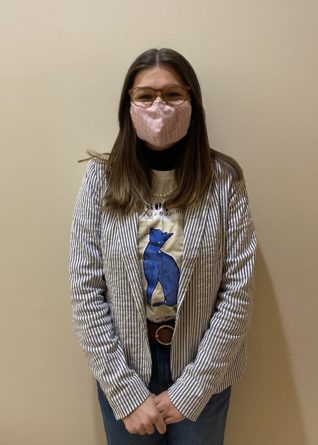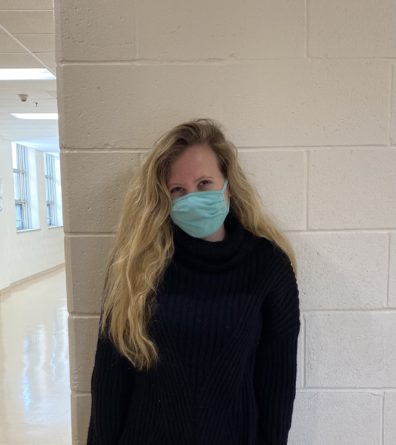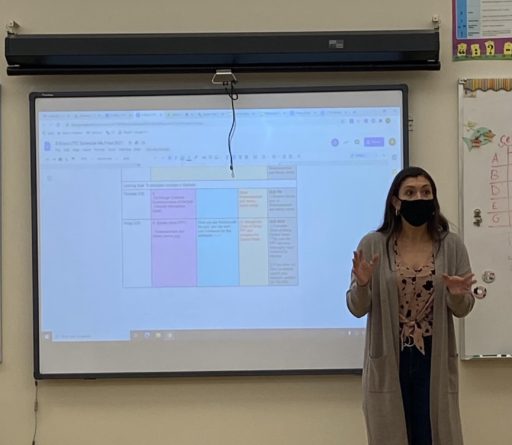“Even though COVID has certainly created this additional challenge, I am grateful to be able to work with students and teachers at OA.” -Ms. Murphy, Boston College Class of 2021

Ms. Fundinger 
Ms. Murphy 
Ms. Fried
It is no secret that as the coronavirus pandemic has altered the world’s definition of regular life, many things have been overlooked when the topic of adapting to this new circumstance is discussed. Of those things that were forgotten? Student teaching.
Some of the student teachers at Oliver Ames gave their perspective on how COVID has changed their learning experience in terms of previous years, different opportunities, and future experiences.
One of the history student teachers, Ms. Murphy from Boston College, explains that the biggest challenge for her with COVID modifications has been “navigating how to engage both in-person students and virtual students. As a current student, I completely empathize with the difficulties of virtual learning from both perspectives. It’s important to be flexible as a teacher, so I am just rolling with whatever comes my way. Even if it is not what I expected, I am still growing and learning with my classes, and becoming a more well-rounded teacher.”
Student teachers have a very unique perspective when it comes to education during this pandemic as Ms. Murphy acknowledges, they see not only the student’s side of hybrid learning, but also how teachers must modify their lesson plans. Alterations to lesson plans have been extremely different for art classes especially, as noted by OA’s art student teacher Ms. Fundinger from Umass Amherst.
“Before COVID, since my program is really hands-on and all about kinesthetic and visual teaching many of my classes were based on trying out different art projects and lessons in class and working collaboratively with the other students in my program. I feel that Art education is really suffering because of COVID since the field is all about making things. My classes have since become more independent and we are learning about virtual learning methods. I have really had to learn more about preparing for projects far in advance and working around students having limited materials.”
As Stonehill College student teacher Ms. Fried pointed out, other challenges are centered around hybrid learning. Having half of a class’s students at home and half physically present in school creates a disconnect between students.
“I think that everyone is doing everything they can to make this a productive experience for the student teachers, and also the students in our classes.” -Ms. Fried, Stonehill College Class of 2021

“Not being able to have everyone in one space makes it harder for me to know whether or not students are understanding the material completely. … I have noticed that it’s harder to incorporate group work when not everyone is together in one space. I love providing opportunities for students to interact and collaborate with one another, so I have been finding new and productive ways to do that in this hybrid model.”
Going along with the disconnect that comes with hybrid learning is the hindrance it has placed on classmate and teacher relationships, according to Ms. Fundinger.
“I feel that I am missing the personal relationship building and classroom management aspects because of virtual learning and having class discussion has definitely been a mountain to overcome. Additionally, because students cannot share materials there is a lot less freedom in the room for students and a lot more running around for me. Students can’t share materials and there is definitely a quieter environment than I expected because of this pandemic.”
While there are undoubtedly many challenges that come with any type of education-related issues while complying with COVID guidelines, all of OA’s student teachers discuss how having a positive mindset is genuinely beneficial in the overall success of teaching this year.
Ms. Murphy discusses the positive attributes of remote modifications with “if COVID was not a thing, I wouldn’t have been able to teach here! BC is too far away, so they would not have sent a supervisor out to Easton to observe me. With virtual learning, my supervisor can just hop on our Google Meet. I try to look at COVID teaching from this lens… This year is hard for anyone, so if students can “buy” into what I am teaching, then maybe it could make this experience more positive for all involved.”
Going along with a similar positive mindset, Ms. Fried and Ms. Fundinger both acknowledge that while this year has been a challenge, teaching and learning during this time is still possible and beneficial.
Ms. Fried explains how she continues to “come into the school every day and learn something new. I think that this model is different, but still effective.” Ms. Fundinger also accounts that “handling a virtual classroom and an in-person class has really become a learning curve that I feel I will become a stronger teacher for.”
For all it is worth, these student teachers are making remarkable strides, and were kind enough to share some advice from their own personal experiences for any individuals who are interested in pursuing a career in the education field.
Ms. Murphy states that her “main advice would involve being okay with messing up. Part of the fun parts of teaching is it always changes and you can always improve. With that, you have to be able to mess up, learn, and shake it off. I also think it is essential to remember that students are first and foremost human. This year especially, remembering that there is a lot going on in everyone’s lives is necessary.”
Ms. Fried’s advice for students pursuing the education field relates heavily to relying on those who are already teaching.
“Ask them about their experiences, about the things they like and dislike, and about the challenges and rewards this profession offers. I have learned so much from the teachers I work alongside, just by talking to them about their own trials and tribulations.”
And finally, the advice that Ms. Fundinger has with regards to student teaching is that “it is okay to be nervous. I was so nervous and I had no clue what to expect. I really did not think that I was going to be successful at speaking in front of a class and being a leader in that way. However, you quickly learn that if you want something it is so easily attainable and you grow into your teaching persona. It really gets easier each and every day. I definitely think that if you are passionate about teaching and enriching the lives of k-12 students then it is totally worth it.”
